The Beauty and Freedom of Black Punks
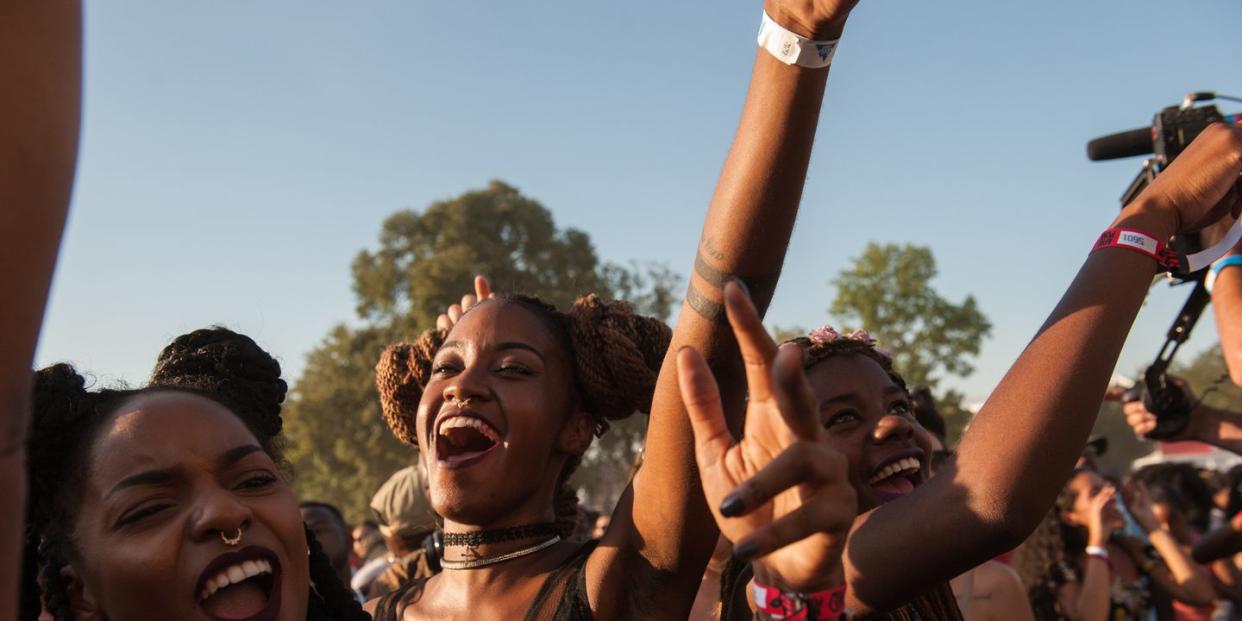
- Oops!Something went wrong.Please try again later.
- Oops!Something went wrong.Please try again later.
- Oops!Something went wrong.Please try again later.
Punk is a genre defined by rebellion and it is now half a century old. This contradiction means the legacy of punk is ever changing. Punk's influences are wide-ranging and varied, from bands like Bad Brains to the girl groups of the early 1960s to our December cover subject, Patti Smith. Punk is a space of artistic and political experimentation and from its inception, people of African descent have created, rebelled and influenced within the scene.
Here, Harper’s Bazaar gathers a group of Black punk creators, across generations to discuss their work in the scene; artistic influences and what the ethos of punk has brought to their creative lives.
Felice Rosser was there at the birth of New York City new wave and punk. She collaborated with Jean Michel-Basquiat, Bush Tetras, and Gary Lucas and appeared in new-wave classics like Jim Jarmusch’s Permanent Vacation and Lizzie Borden’s Born in Flames. Her own band, Faith NYC, fuses the musical styles of jazz, punk, and reggae–all the disparate traditions she’s drawn on as an artist. The writer and illustrator James Spooner came to punk as a teenager in the ’90s, eventually directing the hugely influential documentary Afro-Punk in 2003. He is currently working on an anthology on Black punks, Black Punk Now, out next year with Softskull Press.
Working alongside Spooner on this effort is Chris L. Terry, the author of the novels Black Card and Zero Fade and a veteran of the early 2000s punk scenes of Richmond, Virginia, and New York City. Honeychild Coleman is a founding member and organizer of the Sistagrrl Riots and is currently a member of the 1865, an all-star Black punk band. Osa Atoe is a longtime punk organizer who, in 2006, began publishing the zine Shotgun Seamstress, highlighting, in part, Black punk artists. Her work has been anthologized in a book of the same name, alsp published by Softskull in November 2022. It should be noted that Softskull, led by its Editor-in-Chief Mensah Demary, is documenting Black punk through a number of forthcoming books.
For this conversation, Rosser, Terry, Spooner, and Coleman joined Harper’s Bazaar on Zoom. Atoe joined later over email. The conversation ranged across punk heroes and antiheroes to the allure of the genre. As Atoe says, “I just wanted freedom to be myself without worrying about superficial bullshit.”
This conversation has been edited for length.
How did you come to punk music?
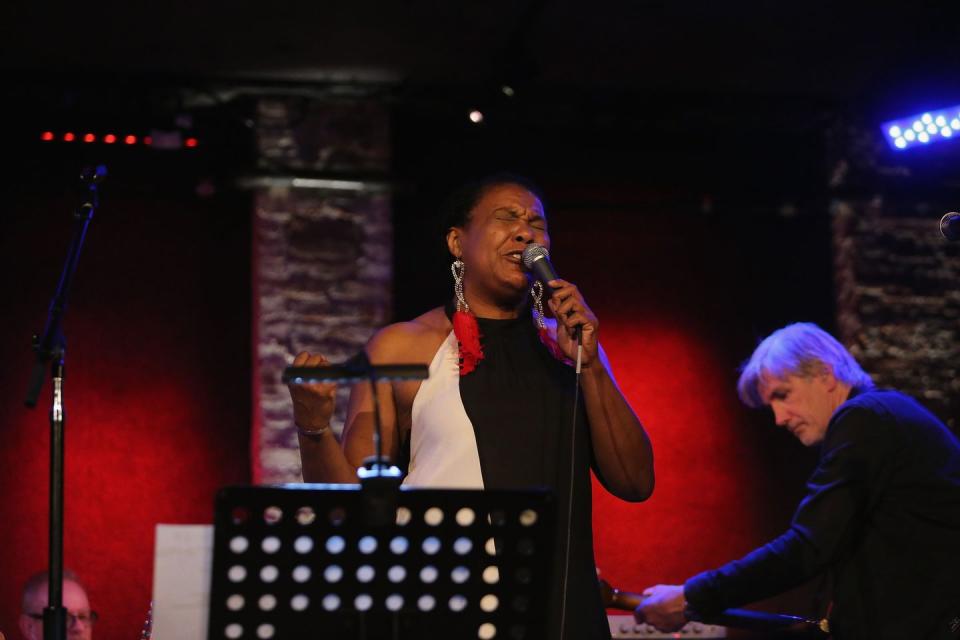
Felice Rosser, bassist, singer, and songwriter of Faith NYC: I’m from Detroit, and I grew up listening to rock ’n’ roll music there. I moved to New York to go to school–Barnard College. I’d been reading Patti Smith’s work and Creem magazine and stuff like that. She came to give a reading at our college, and afterward she said, “Oh, our band is playing downtown. You guys should come see it, see us.” So I did that, and the rest is history. We went to see her play at Reno Sweeney’s, which was a club on the West Side. Afterward we were sitting next to the guitar player’s girlfriend, and she said, “Oh, we’re going to this club. You guys should go.”
So we went down to this dark Bleecker Street club—totally dark, all these kind of derelict men around, trash cans—and looked, said, “Is that the place?” It’s way down there. We went there and opened the door and I saw Television playing there. And there were seven people in the audience.
If you like rock, and if you are used to 20,000-seat arenas with Led Zeppelin and all that, to then see that rock can be with seven people in the audience and be just as moving–it is a mindblower. That was my start into downtown New York rock ’n’ roll.
Chris L. Terry, novelist: I got into punk through skateboarding. I was a hip-hop kid who liked skateboarding, and I was reading Thrasher, and it talked about a lot of punk bands. And I remember Bad Brains really grabbed me ’cause it was a Black punk band playing aggressive guitar music.
James Spooner, artist, illustrator, and director of the documentary Afro-Punk: Like Chris, I got into it through skateboarding and seeing...hearing the music in videos and being 12 years old and just wanting to emulate my favorite skaters.
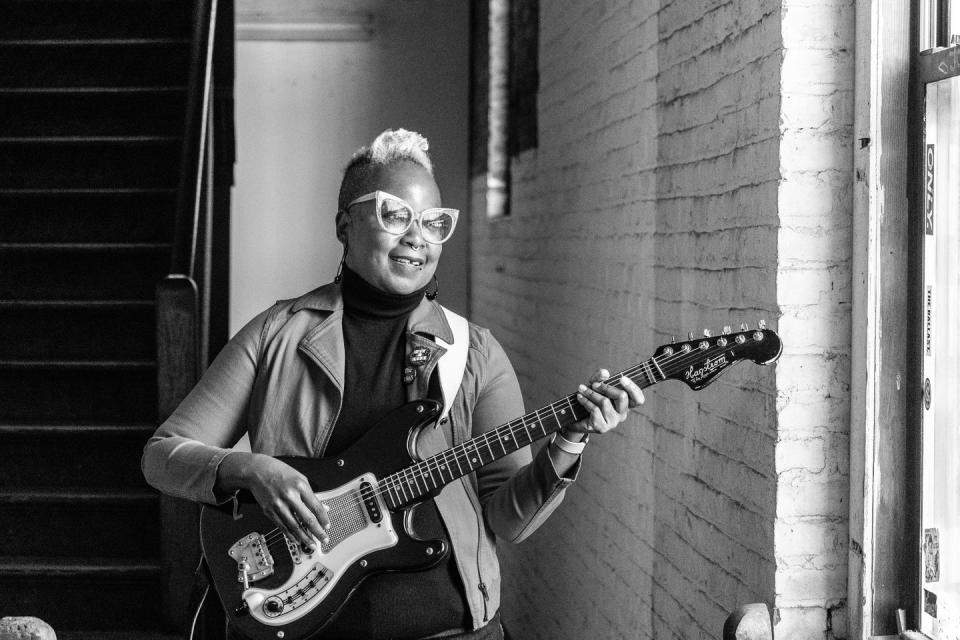
Honeychild Coleman, musician and artist of the 1865 and Bachslider: When I started getting into punk and even new wave, I was a big Blondie fan. And during that time, Blondie was really more known for disco. But because I was a nerd, I went backwards and started looking at everything they did leading up to that. And I discovered that they did really strange kind of outside punk stuff. And also just their fashion style was more punk and more DIY. And I started sewing and making my clothes and stuff because I realized, Oh, you can express yourself visually this way.
But at the same time, I was also super into ’50s music and rockabilly and Bo Diddley. I talk about Bo Diddley a lot because he was a big influence on me for guitar and also for fashion. It was his wit, his lyrical humor. He’s a great storyteller. And also maybe I have an affinity because he’s southern. He worked on cars, and he also did hair. And he also had these amazing custom guitars. And then his fashion sense was insane. Also, his side guitarist was a woman. He always really uplifted women players, which—again, for some strange reason, between the ’50s and the ’80s, that stopped happening.
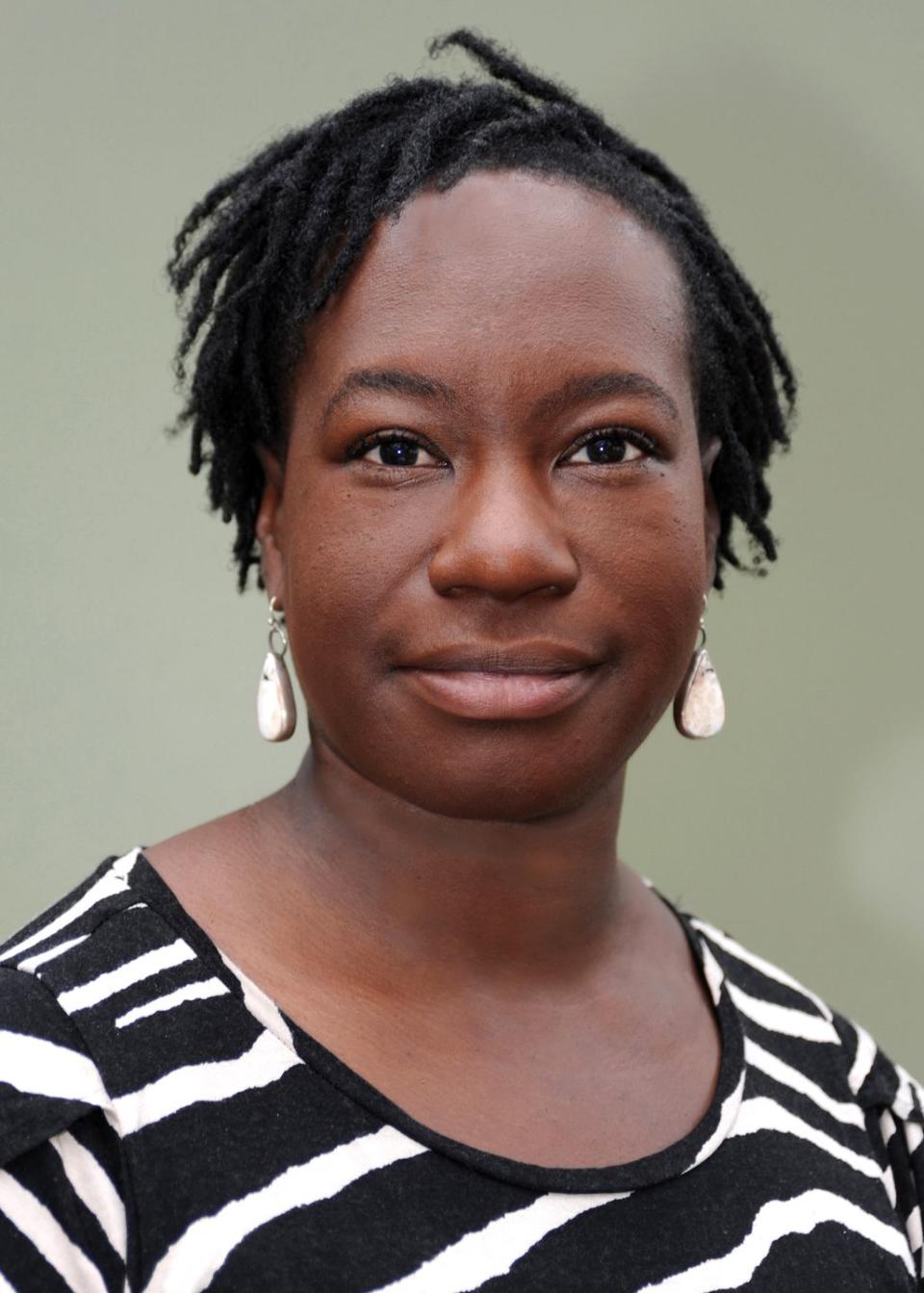
Osa Atoe, writer and creator of the zine Shotgun Seamstress: Punk meant to me, ideally, freedom. I was looking to live outside of mainstream rules and expectations. I didn’t care about what other kids at my high school cared about, like popularity and brand-name clothes. And then riot grrrl fused punk and feminism, so I felt liberated as a woman from self-judgment about my appearance. I also felt like I could be queer without judgment. I just wanted freedom to be myself without worrying about superficial bullshit. (Later, I found out that punks are totally worried about superficial bullshit, but that’s another story for another day.) Also, the DIY ethic is the most important part of punk to me. Making a way out of no way. Instead of waiting to be asked to play a show, set up a show for your own band and invite all of your friends. That ethos serves me until today.
Who were your artistic heroes in punk? And who are the artists you argued with?
Felice Rosser: When I started, they didn’t have women, especially Black women, in bands. People would say, “You say you’re going to sing? What?” If you were talking about singers in bands, it was all these girls who’ve been singing in church since they were four…and you can’t get out there with those girls.
Osa Atoe: I don’t argue with artists, but I do argue with the idea that technique is the most important aspect of art making. I appreciate work that is technical, but I disagree that work needs to be technically proficient to be effective, and that’s an idea I got from punk rock.
The older I get, I wonder if the same holds true for Black artists. Are we given the same grace and admiration when we show a lack of technical proficiency? I think about the band Death, an all-Black band from Detroit that was making punk sounds as early as 1975 but got lost to history in favor of bands like the Ramones and Sex Pistols, whose music is rudimentary in comparison. Bad Brains are the one Black punk band that is widely celebrated, and they are extremely technically proficient musicians who could switch genres on a dime. Are Black artists allowed to suck and still be revered?
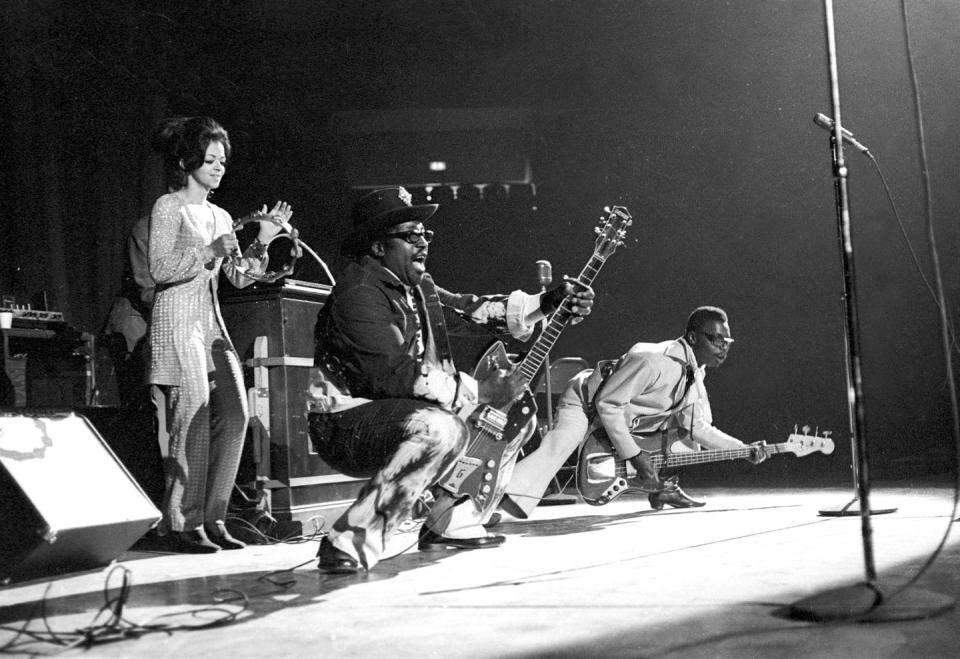
Is rebellion an important part of your work?
Honeychild Coleman: I was in this band called Audio Dyslexia. I was a Black woman fronting a band with three older, much more established white guys. I think about what you just said, Felice, about being a Black woman who sings, who’s in the rock ’n’ roll world, and what’s expected when you step onstage. [That band] was the first time where I felt like “Oh, I’m expected to be Black, but what is their definition of Black versus what I feel as an artist and as a person?”
And I rebelled. I mean, people would say stuff to me in the studio that really caught me off guard because I wasn’t used to being the Black girl in the studio. I was more used to being the artist. So every song I wrote with that band was so political. It was just, like, “I’m just going to say anything because I’m up here to give you the opposite of what you expect.” And I went deep with it. I felt like, audience-wise, something happened. People just didn’t really know what I was going to do. And it was challenging. It was to this day, I feel, some of the most powerful writing I’ve done, but it was all reactionary.
There’s no way I’m going to get on stage with a bunch of white dudes and not talk about what’s happening in the world. I don’t have that privilege. It’s not to say I couldn’t have fun with it, but I just felt the duty in a way.
In every scene I’ve kind of been on the edge of, sometimes you don’t feel like your presence is acknowledged, that you can just be yourself.
I don’t want to make people feel like they finally found their place, and then they get there and it’s not for them because something that I’m doing is hurtful or harmful.
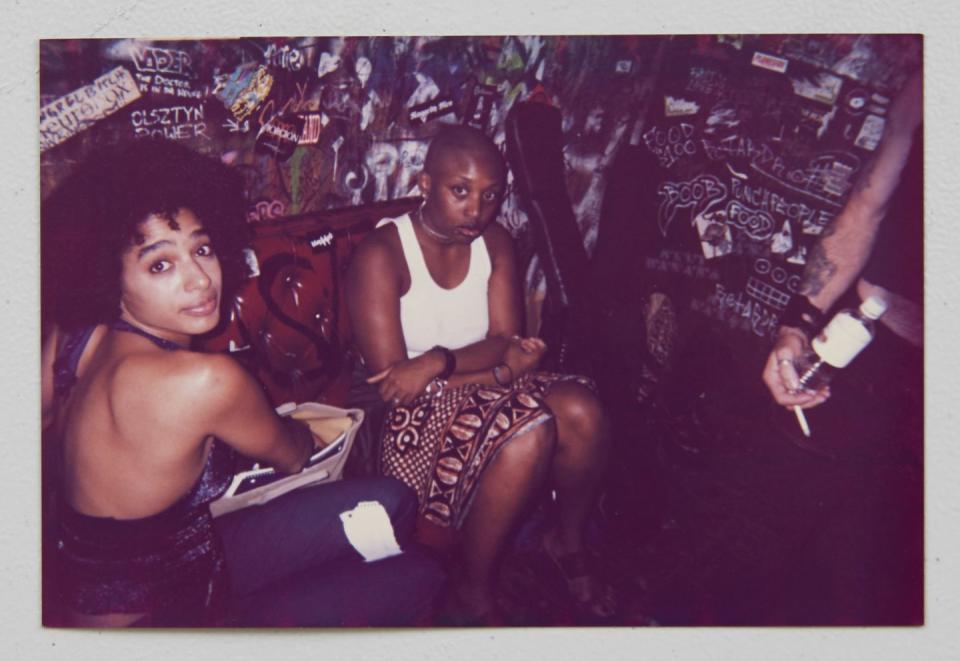
James Spooner: My theory is that almost every movement in punk rock is in reaction. Obviously, punk itself was in reaction to disco, arena rock, whatever was happening at that time, right? But since then, we’ve had punk for 40, almost 50 years. Every moment within has been in reaction inside the community…. [Punk] is constantly imploding and reacting to itself. And it’s almost like there’s never an original thought. It’s always just, like, if we’re not saying fuck you to something, then we’re not saying anything.
If there’s one song in particular that could really just set the course for my entire life, it’s Patti Smith’s "Rock N Roll Nigger". If you look at the beginning of my film Afro-Punk, it’s dedicated basically to her, without saying her name. When I started the project, I was so angry at punk in general, at the audacious whiteness of my friends, and the song "Rock N Roll Nigger" encapsulated that audaciousness for me. So I had a pointed anger.
But what’s interesting is, by the time that I get to the end of the film, I’m realizing that I’m not even thinking about Patti Smith because it’s such a celebration of all of these Black voices.
Now there’s a whole new generation of kids who go to Afropunk Fest and are like, “Fuck this.” And then they start their own fest, which is the most beautiful gift to me, the person who created [Afropunk]. Thank you for saying fuck you and creating your own thing, right?
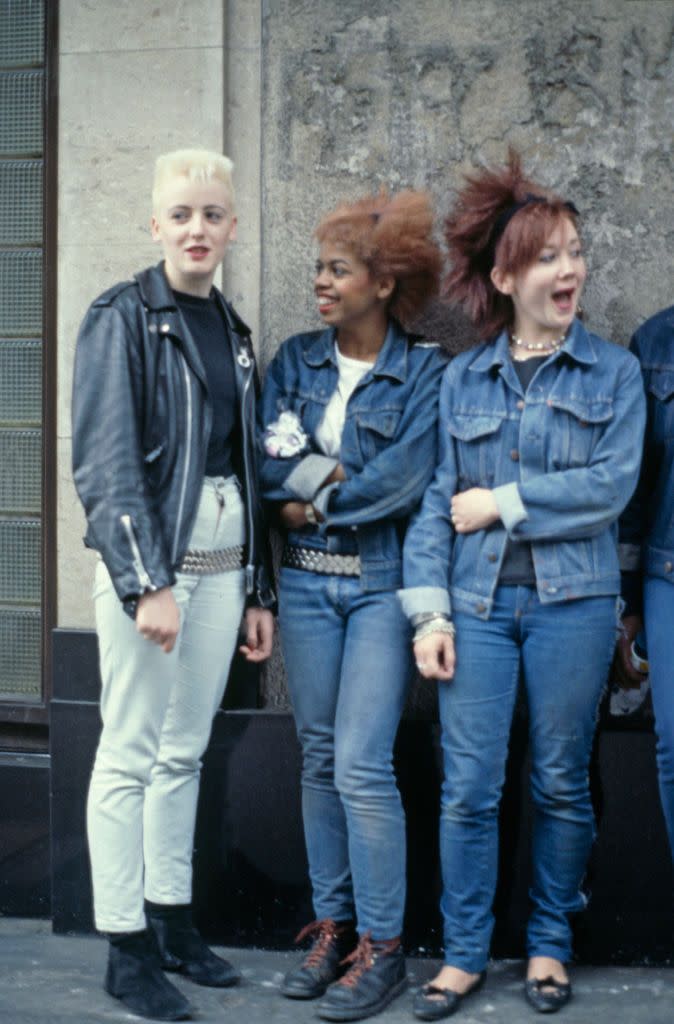
Felice Ressner: Certainly, punk was a reaction when we started off. It was a liberation. You would see people like Jimmy Page and certainly Jimi Hendrix, who had passed on, but these great players. So you thought that you could never do anything like that. You could never play because you couldn’t play like them. But [with punk], you saw people who maybe didn’t have all the dexterity musically but still had something to say and were not afraid to say it. And it was very valid. And it was also a reaction against the superficiality of what the mainstream culture was at the time.
I go to this jam session every few weeks, and one of the bassists there—he’s I guess the world’s greatest bass player or something. With something like that, you would feel that you have nothing valid to say. There’s like that air with that. And I’m a reaction against that because I still think people have something to say and it’s valid. So that’s my reaction.
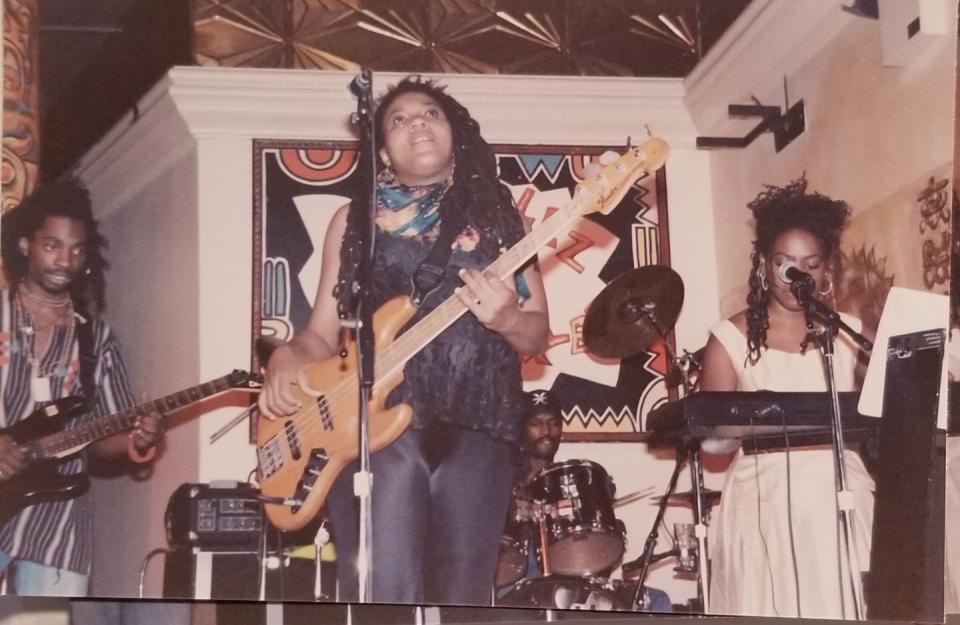
Chris L. Terry: I think I’m always reacting to or fighting against nostalgia. I’m always suspicious when someone thinks that things used to be better. ’Cause, you know, start going back, the next thing you know, you’re before civil rights, and then you’re at slavery, and you’re like, how far back do you want to go? When were things at their best?
James Spooner: Make punk great again.
Chris L. Terry: You have the people who think that the sort of shock value of punk in the ’70s, in the early ’80s is the be-all and end-all. Then you have a John Lydon of the Sex Pistols who’s, like, into Trump because it’s the ultimate troll. Or the guy from the band SSD who was wearing a Black Flag Matters shirt instead of Black Lives Matter. It’s like, that’s not working, man. Who are you trying to provoke here, exactly?
I’m also thinking about my own nostalgia because I’ve been listening to punk music for about 30 years now. So I’ve got my own nostalgia, and I want to fight that away so that I don’t become closed-minded. I want to keep growing with the world as an artist and as a person.
Another sort of nostalgia: I came of age in Richmond, Virginia, the capital of the Confederacy. And even in the punk and metal scene, there were a lot of people who had love for the South. These are white people with southern pride, and that got sketchy really fast. So even in the punk scene, there were people rocking Confederate flags on some kind of heritage, not hatred, stuff, and maybe as a kind of trollish button pushing, similar to CBGBs people wearing swastikas. And it’s like, okay, you know what that flag means, right? And I’m here too. This isn’t creating the open-minded space that I was hoping punk would be. So there’s that nostalgia that I’m fighting as well.
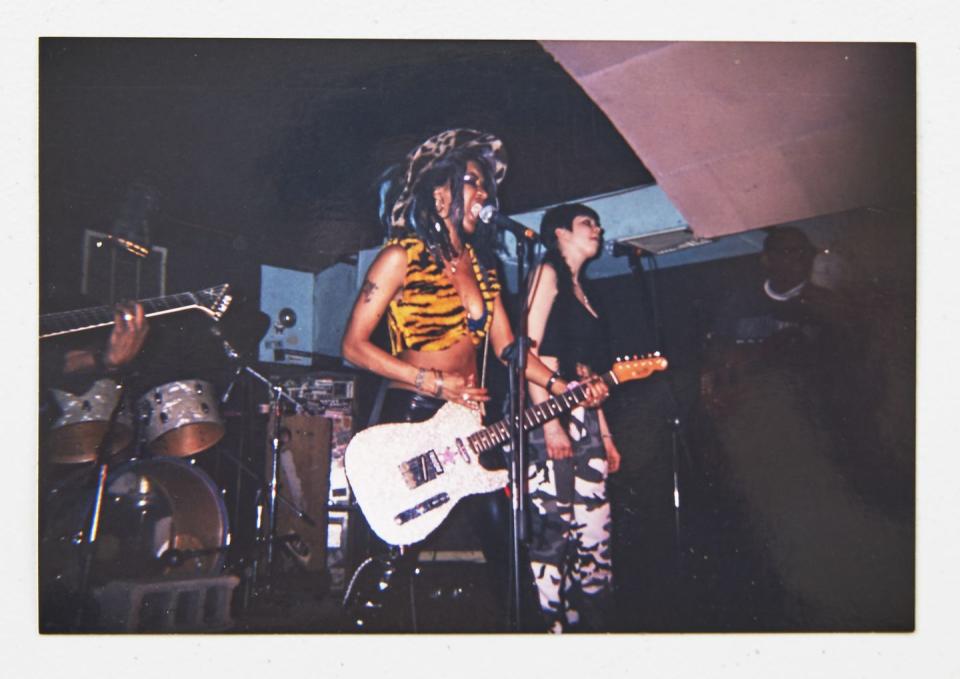
James Spooner: [Like with] Patti Smith...we all understand what you are trying to say, what kind of transgressive conversation or dialogue you’re trying to have, using the N-word. So we know what you’re trying to do. Also, don’t do that. Also, it hurts. Also, it is painful to watch. None of us, I think, are over here saying Patti Smith is doing the biggest disservice to us as Black people. But it is also way more personal than most of the extreme racism that I’ve encountered.
I want to live in a world where people can make mistakes and then they can own up to them. Especially if they’re public figures, they can publicly own up to them. And then all’s forgiven. We move on. We learn from those things.
Felice Rosser: I think [Patti Smith] was just naive. I remember when it came out. I remember seeing the whole vibe. I think she was naive to go there. I mean, coming up from Detroit back in the Stooges’ days with all the bikers selling Valiums and Seconals, all those type of guys…that was nothing new. Me and my girlfriends, my crew, which included some Black women, some white—we were just rolling, having fun, going to shows and stuff. There’s some guy standing there with an Iron Cross next to you selling quaaludes or whatever. And you’d just be like, oh, well, fuck him. He’s just an idiot. And I have a right to be here too. I have a right to be here, and I don’t care. And we like the music.
I will always love Patti Smith. When I think about her, I don’t think about that song. She inspired me to go to Paris in 1979 and see the world as a much broader place than what I see in the United States. I will always respect her.
You went to Paris as a Black punk in 1979? What was that like? A friend always describes Paris as "the Blackest city."
Felice Rosser: America, especially then, was so xenophobic. You go there and you see Africans and people from all over the world. It opened my mind as a Black American. I was in the tradition of so many Black American artists who went to France and found that they were treated as Americans, which means they think you have money. But to go there and meet Africans--it's an incredible experience.
We were in the 7th arrondissement. It's kind of a well to-do area. You see Black people, families, getting out of limousines. Who are they? Diplomats, bankers, with young children walking in, dad, mom....Just ruling things. And going into the 18th arrondissement, where it is just like you've just gone into to Africa, from Côte d'Ivoire, to Senegal, to Mali, everything just boom, boom, boom. Hustling.
James Spooner: My experience in Paris was finding an African restaurant and eating there. And then I asked the proprietor, "Where do the Black people hang out? Tell me where to go." And he said, "Come back here on Thursday." So I came back and his friend showed up in a Rolls Royce. He said, "Go with him." This was a seventies Rolls Royce, no seat belts, it was a tank. And me and my partner got in there and we just drove, I don't even know for how long. We pulled up to an office building. We go up to the second floor, and it's just a straight up disco in an office with drop ceilings, and they taped the floor down with duct tape, and they're serving bottles of Hennessy. All this because I just asked where to go. That's beautiful, magical, international Black love.
Osa Atoe: Punk for me is being connected to this huge social network that extends across the Atlantic to Europe. I could show up in London tomorrow and meet up with people I know through bands and zines.
Honeychild Coleman: I had a residency in Paris with the band Apollo Heights. I was recording in Château Rouge, which is like Paris's Harlem. I'm looking around thinking, "This is where all the Black people who have self pride are." Just walking down the street, elegant, on a Sunday, doing nothing. I love Paris for that. And no one tells you. It's not all baguettes.
James Spooner: The baguettes are good though.
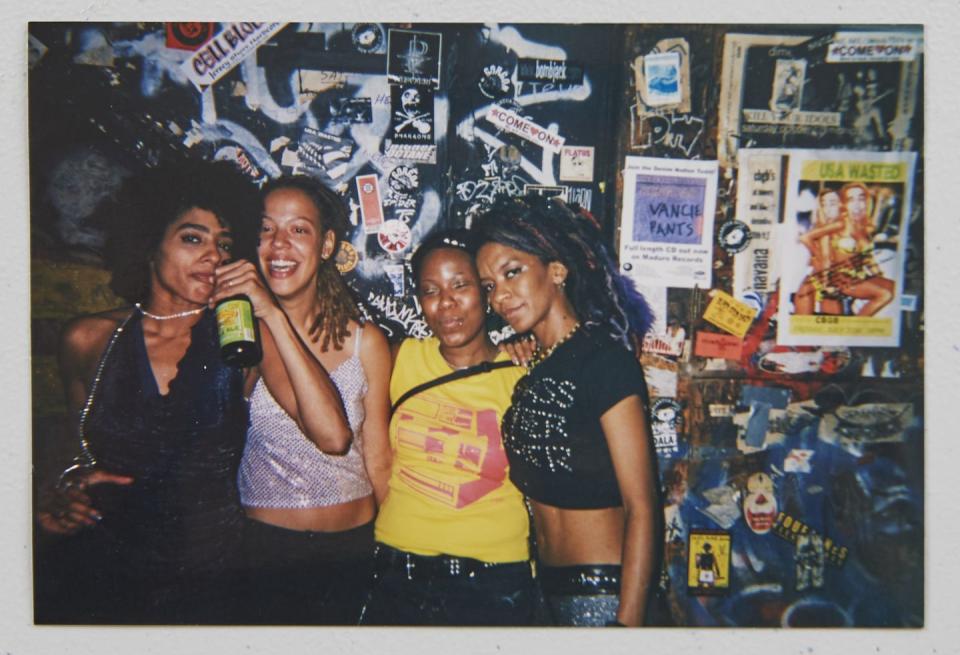
HBZ: Do you still feel connected to punk?
Chris L. Terry: I’ve been criticizing the punk of my youth a lot, but that’s also a place where I learned about abolitionist politics. And it’s been interesting, especially in the last few years, and heartening to see stuff that felt really far out, like defunding the police, moving into mainstream conversations. So I want to be clear that it wasn’t all bad. And if I only had hate in my heart for what my life was back in the day, I wouldn’t be here talking about it today.
Osa Atoe: I started to feel psychologically isolated from the scene at the end of my time in New Orleans when I was overwhelmed by the alcoholism, drug use, violence and nihilism in the scene there. Sometimes I felt like the only one who thought it was a problem. When I got into punk, it was about politics and creativity. In New Orleans, I started to see how people were using political rhetoric to actually be destructive and divisive and I think that comes from the fact that the scene was so nihilistic. It was really depressing to see people using the language of liberation to evade accountability and ostracize their peers.
With punk, I feel connected to the politics. Mainstream liberalism is not something I relate to. I love how punk connects your political ideals to your lifestyle. I also will probably always go to punk shows. It’s the only way I know how to have true fun. The first space I think of is a living room. Any living room. I used to put on shows for bands fronted by women, nonbinary people, and queers under the name No More Fiction, and I booked so many shows at houses, sometimes my own house. A house is my favorite place to watch bands play because it’s intimate, casual, and loud. How can you not feel connected when you’re inside a home, crammed in with a couple dozen people, and the band is right there on the floor in front of you?
You Might Also Like

